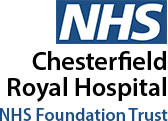
| 0 | 0 |
|---|---|
| hour reduction in time to result* | hour target for A&E patient processing achieved* |
 Challenges
Challenges
The Microbiology Department spent a great deal of time processing stool samples using conventional culture, a labour-intensive process that required a lot of input from specialist biomedical scientists. Laboratory technicians were forced to work longer hours to keep up with the workload.2
According to NHS directives, patients “must be seen, treated [and] admitted or discharged” from accident and emergency departments in British hospitals “in under four hours.”3 Hospital staff found this target difficult to meet.
 Objective
Objective
To greatly reduce laboratory turnaround time and improve staff organisation.
To improve hospital bed management and the overall decision-making process regarding patient management.
To decrease the overall cost of hygiene measures and hospital sideroom costs.
 Solution
Solution
The BD MAX™ system replaced manual culture techniques and allowed better organisation of the laboratory. Specialist biomedical scientists spent less time preparing, reviewing and validating stool samples and all samples were tested on the day they arrived in the laboratory.
With same day results, clinicians were able to better prioritise bed allocations and move patients through hospital care, this allowing them to achieve their 4-hour target for A&E patient processing.
Increased sensitivity in detection of pathogens has allowed more rapid implementation of hygiene measure and appropriate patient management. Chesterfield Royal Hospital also met their goal of lowering the overall cost of hygiene measures and hospital sideroom costs.
Results
The BD MAXTM System for detection of enteric pathogens led to better organisation of the laboratory, more efficient patient management with same day results, and more rapid implementation of infection control measures resulting in reduced costs and improved bed management.
